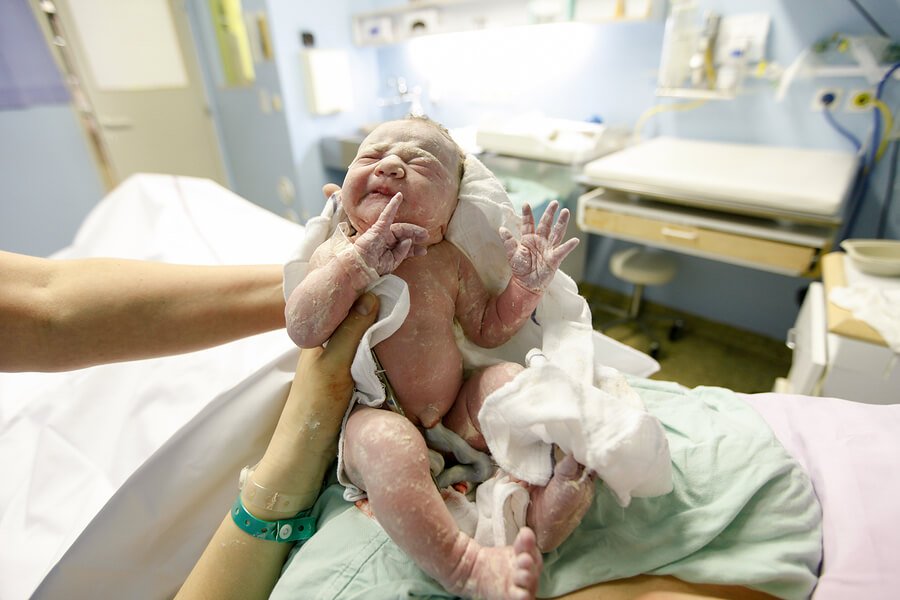Why Women Donate the Umbilical Cord After Giving Birth

Recently, doctors have started urging mothers to donate the umbilical cord after childbirth. This is due to the most recent discoveries regarding stem cells, which are capable of saving many lives.
In this article, we’ll go deeper into the main points of this important topic.
Why the umbilical cord is used after delivery
After birth, many people throw away the “connector” that kept the baby alive throughout pregnancy.
However, now we know that umbilical cords contain blood rich in stem cells. These are the same ones that generate red and white blood cells in bone marrow. In addition, they also generate platelets.
Stem cells can be transplanted to people who have leukemia and can’t find a bone marrow donor. In most cases, the patients are children since the blood content is around 80 milliliters. This is enough for people who weigh less than 80 pounds.
The best part is that the success rate is 90%. This is because umbilical cords require less compatibility with the recipient. The reason is because the lymphocytes they contain are more “immature” in terms of immunology.
However, this doesn’t mean they aren’t good quality. In fact, it’s quite the opposite. It drastically reduces the chance that the receiver rejects it.

How to donate the umbilical cord after childbirth
First, mothers need to have a routine analysis during pregnancy to rule out communicable diseases. When the doctor approves the donation, mothers can then give written consent. This process is completely painless.
The doctor then enters the donor’s data into a computer registry. The information is completely confidential. That is, no one will know the mother’s name.
It’s also good to know that umbilical cord blood can be used for research purposes as well. This is if doctors can’t use it with another patient.
“Now we know that umbilical cords contain blood rich in stem cells. These are the same ones that generate red and white blood cells in bone marrow. In addition, they also generate platelets.”
After delivery, whether natural or c-section, removing the umbilical cord is very simple. In addition, it doesn’t make the baby or mother suffer. It’s an easy and safe procedure.
How to cut the umbilical cord

After at least three minutes have passed since delivery, it’s time to cut the cord. Maternity staff or the OB/GYN will cut the cord for all newborns. If there are multiple babies, you’ll wait until all babies are born to cut the cords.
To donate the umbilical cord, it needs to be removed before the mother expels the placenta. After that, the doctor will disinfect it with an iodine or alcohol solution. Also, they channel one of the blood vessels so the blood falls in a collection bag.
In addition, the doctor will cut a one-inch section to use for further studies. When the mother pushes the placenta, the doctor repeats the process to collect blood inside the tissue.
They send the entire sample to a special blood bank. The stem cells are processed and stored at 196º C below zero. Then, doctors can use them on any patient who needs it. They transfer it using a transfusion that replaces the recipient’s diseased stem cells.
To donate the umbilical cord, the baby needs a clinical examination right after birth. They can also have an optional one three months later. The pediatrician will tell you what’s best for you and your baby.
Without a doubt, it’s a very personal decision. Only the mother and her partner should make this choice.
Donating the umbilical cord can save lives and doesn’t involve any complications. It also won’t harm the baby or mother. It’s a completely selfless act of love!
All cited sources were thoroughly reviewed by our team to ensure their quality, reliability, currency, and validity. The bibliography of this article was considered reliable and of academic or scientific accuracy.
- Shahrokhi, S., Menaa, F., Alimoghaddam, K., McGuckin, C., & Ebtekar, M. (2012). Insights and hopes in umbilical cord blood stem cell transplantations. Journal of Biomedicine and Biotechnology. https://doi.org/10.1155/2012/572821
- Taupin, P. (2012). Umblical cord blood and alpha-3 fucosyl transferase-treated haematopoietic stem cells for transplantation. In Stem Cells and Cancer Stem Cells, Volume 1: Stem Cells and Cancer Stem Cells, Therapeutic Applications in Disease and Injury: Volume 1. https://doi.org/10.1007/978-94-007-1709-1_19
- Jaing, T. H., Hung, I. J., Yang, C. P., Tsai, M. H., Lee, W. I., & Sun, C. F. (2009). Second transplant with two unrelated cord blood units for early graft failure after cord blood transplantation for thalassemia. Pediatric Transplantation. https://doi.org/10.1111/j.1399-3046.2008.01021.x
This text is provided for informational purposes only and does not replace consultation with a professional. If in doubt, consult your specialist.








